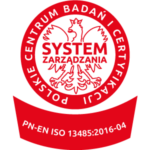DM-01
Dual Marathon Wheelchair
DM-01 is a modern wheelchair created especially for duets starting in long-distance runs. Made from super-light carbon fiber laminate- used f.e. in aerospace and motorsport industry, it is characterized by high rigidity, strength and sporty style with maintained low weight.
DM-01 is a modern wheelchair created especially for duets starting in long-distance runs. Made from super-light carbon fiber laminate- used f.e. in aerospace and motorsport industry, it is characterized by high rigidity, strength and sporty style with maintained low weight.






Work developed in scope of this project contained the full design of the wheelchair and the construction of a functional prototype that took part in a half marathon just 3.5 months after our first meeting with the client. The wheelchair was then further developed based on experience from subsequent runs leading it to the product phase. Currently, it can be ordered at www.dualmarathon.com
DM-01 was created for users and their comfort. The ergonomic position of the passenger and the comfortable, easy-to-clean upholstery prevent any discomfort that could ruin the enjoyment of running together. The runner has at his disposal a steering wheel, the position of which can be modified on many levels, allowing you to adjust it to your needs and comfort.
Work developed in scope of this project contained the full design of the wheelchair and the construction of a functional prototype that took part in a half marathon just 3.5 months after our first meeting with the client. The wheelchair was then further developed based on experience from subsequent runs leading it to the product phase. Currently, it can be ordered at www.dualmarathon.com
DM-01 was created for users and their comfort. The ergonomic position of the passenger and the comfortable, easy-to-clean upholstery prevent any discomfort that could ruin the enjoyment of running together. The runner has at his disposal a steering wheel, the position of which can be modified on many levels, allowing you to adjust it to your needs and comfort.






The project raised a lot of attention due to its style and the subject of social activation of disabled people. It was a part of the STEM exhibition at the Central House of Technology in Warsaw, where it was recognized by Polish government institutions and was chosen to represent Polish innovation at the European Union trade fair in Brussels and the WUF10 trade fair organized by United Nations in Abu Dhabi.
The project raised a lot of attention due to its style and the subject of social activation of disabled people. It was a part of the STEM exhibition at the Central House of Technology in Warsaw, where it was recognized by Polish government institutions and was chosen to represent Polish innovation at the European Union trade fair in Brussels and the WUF10 trade fair organized by United Nations in Abu Dhabi.






Design process and prototype construction
The first prototype was created for Marek Wendreński, which for the sake of GrandpaGang initiative was looking for a wheelchair, that would allow him to run a marathon with his grandfather as a passenger.
During the first meeting, he told us about the experience they had gathered during earlier runs with an ordinary wheelchair – a year earlier he and his grandfather finished a half-marathon. After formulation of the needs and requirements for the design object, we proceeded to identify solutions which existed on the market, their parameters and functionalities.
Equipped with a set of data, we created conceptual drawings, visualising the outline of the wheelchair, which we consulted with Marek to choose the most suitable design. We started 3D design by determining the geometry of the wheelchair. As agreed with Marek, to achieve maximum rigidity and thus reduce energy loss during running, turning the wheelchair was realised by lifting the front wheel while changing direction. This solution had to be properly designed so that the change of direction was not difficult, but also that the front wheel was not lifted by accident. For this purpose, it was key to lay out the center of gravity, lower it to improve stability as well as passenger comfort, and to position the steering bar in a way for the wheelchair to be easily manipulated. The rigidity of the entire system is ensured by the frame, whose shape has been optimised, taking into account the loads that occur at its individual sections.
3D design methods allowed us to lay out the geometry so that the runner had enough legroom, the passenger position was ergonomic, and the wheelchair was comfortable to drive.
DM01 was designed by a hybrid 3D design method – we used both solid and surface modeling methods. Solid design is based on creating flat drawings and giving them volume, objects are created by combining simpler geometric figures and arithmetic of solids. Surface design, however, involves creating surfaces in space that have no volume, but it allows to create far more complex objects and use a different palette of tools to manipulate their shape. The combination of these two methods makes it easier to create objects that have volume, which allows, for example, to print an element, and at the same time with an attractive appearance.
DM01 characterise by a strong, aggressive appearance, weight below 11 kg and a rigid frame. Our production technology of affordable short-series moulds has allowed us to use carbon laminates, which are also used in aviation and motorsport. For the construction of the wheelchair we used both open (vacuum) moulds for open elements, such as the seat, and closed (high-pressure) used, e.g. for the production of the main frame, which is a closed profile.
We further developed the prototype based on the experience acquired by GrandpaGang during subsequent marathon starts. Both the seat and backrest of the final version of the wheelchair were made using sandwich technology. This means that they consist of two thin layers – external and internal, with foam between them. This solution allowed us to maximise stiffness and minimise weight, by separating the thinner layers from each other and establishing their relative position using light foam.





